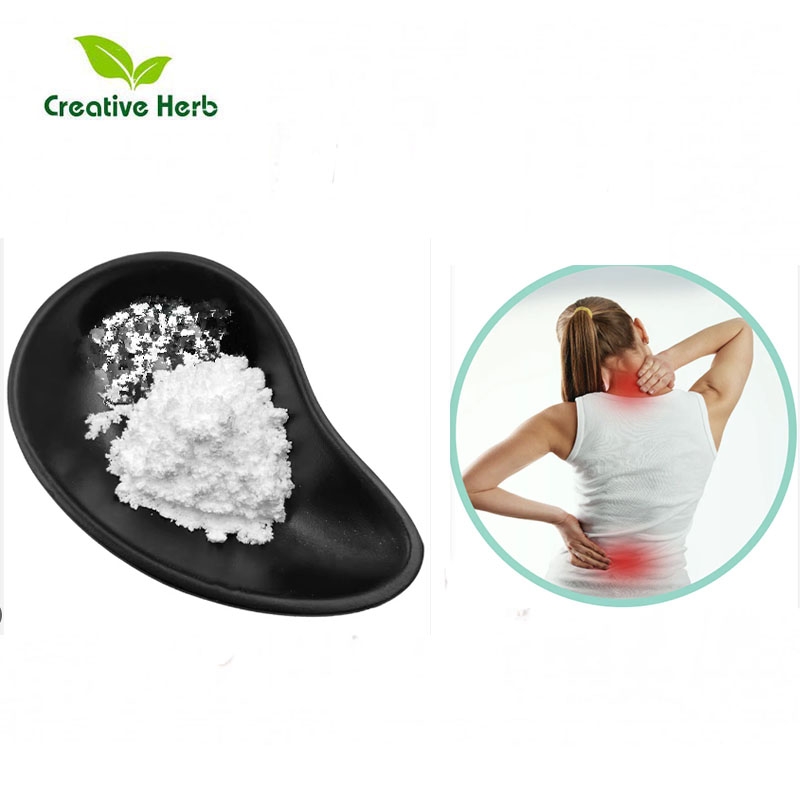Nature weighs! Finding the key link between different types of cells and arthritis
-
Last Update: 2019-06-04
-
Source: Internet
-
Author: User
Search more information of high quality chemicals, good prices and reliable suppliers, visit
www.echemi.com
June 4, 2019 / BIOON / - scientists from Oxford University and Birmingham University recently published a pioneering research result in the journal Nature, which brings us one step closer to targeted therapy for inflammatory diseases For the first time, the team found that different types of fibroblasts, the most common connective tissue cells in animals, have different layers of tissue in the joint and lead to two distinct types of arthritis, osteoarthritis and rheumatoid arthritis Targeted therapies can change the behavior of fibroblasts, reducing inflammation and tissue damage in both diseases without long-term immunosuppression or joint replacement, scientists say Photo source: nature the study was supported by the Wellcome Trust, versus arts and NIHR Birmingham biomedical research center, which is located at Birmingham University Hospital, the Birmingham NHS Foundation Trust and the University of Birmingham The study is part of the arts therapy acceleration program (a-tap), a joint alliance of the University of Birmingham and Oxford, which aims to ensure that world-class basic scientific observations accelerate into early experimental treatment of patients A-tap is funded by the Kennedy Rheumatology Research Trust at Oxford University "If we compare fibroblasts to soils, this study is the first to show that not all soils are the same," said Chris Buckley, lead researcher and professor of the Institute of inflammation and aging at the University of Birmingham and director of clinical research at the Kennedy Institute at Oxford Just as we have different layers of soil in our garden - topsoil and subsoil - and different types of fibroblasts in our joints - each layer seems to be associated with different types of arthritis From a research point of view, this is exciting, but the clinical significance is also very important For the first time, we found two different types of fibroblasts in the joints, just like different types of soil, which can cause different types of arthritis In osteoarthritis, there is a problem with the topsoil, and in rheumatoid arthritis, there is a problem with the subsoil When patients appear in the clinic and we can't help them, it inspires us to think creatively about how we conduct research and classify diseases "We have now found a new way to classify and treat arthritis, which is based on potential cells, not just clinical features and related genes Current treatments are as effective as herbicides - they kill weeds, but if you don't keep using them, they will come back Our research will promote research aimed at changing topsoil, subsoil or both to treat arthritis It's very exciting to know that we're approaching new solutions for patients, and we're doing that because we're finally using the a-tap project, a process driven cell-based approach to disease research "Two recent technologies and clinical advances have helped researchers complete the study - minimally invasive biopsies and single cell sequencing These two developments have enabled the team to study fibroblasts and their location in the joint in unprecedented ways, culminating in the identification and characterization of the biological characteristics of different fibroblast subsets responsible for mediating arthritis or cartilage / bone injury Dr Adam Croft, the first author, added: "rheumatoid arthritis is difficult to treat It can cause chronic inflammation of the joint, causing pain and swelling, as time goes on, it can also cause damage to the joint This is because the body's own immune system attacks the joint, resulting in the influx of immune cells into the inner wall of the joint Current treatments either target these immune cells directly or attempt to disrupt the signals that attract cells to the joint At present, there is no direct treatment for fibroblasts, which are the key effector cells in the pathology of the disease "Thanks to technological advances, we have now determined for the first time which fibroblasts are pathogenic in arthritis and how they cause disease Importantly, we found that by removing these fibroblasts from the joint, we can reduce the flow of immune cells into the joint, thereby reducing inflammation and destruction These findings mean that we now have a clear theoretical basis for the development of drugs that directly target articular fibroblasts to provide more effective treatment for persistent diseases "Reference: Christopher D Buckley et al Distinct fibroblast subsets drive information and damage in arthritis, nature (2019) DOI https://doi.org/10.1038/s41586-019-1263-7
This article is an English version of an article which is originally in the Chinese language on echemi.com and is provided for information purposes only.
This website makes no representation or warranty of any kind, either expressed or implied, as to the accuracy, completeness ownership or reliability of
the article or any translations thereof. If you have any concerns or complaints relating to the article, please send an email, providing a detailed
description of the concern or complaint, to
service@echemi.com. A staff member will contact you within 5 working days. Once verified, infringing content
will be removed immediately.







